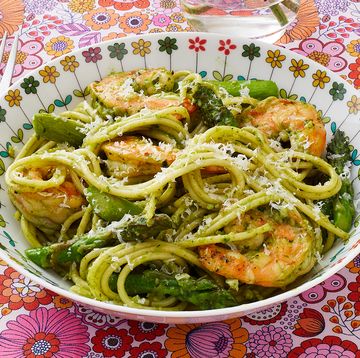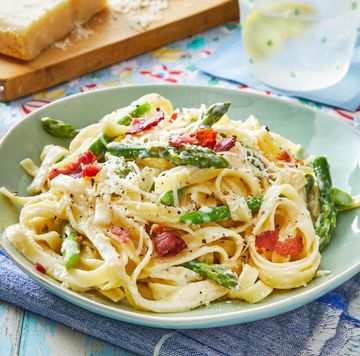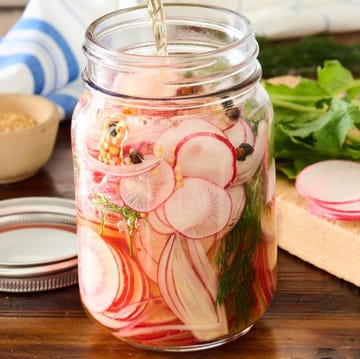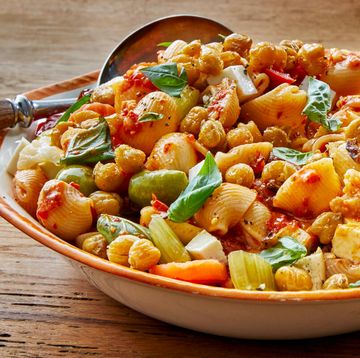April showers bring May flowers (and fruits and veggies)! Everyone knows that May is when spring hits its stride: the days are longer, the sun is warmer, and your garden is practically begging for attention. It's that magical moment when the risk of frost has faded (for most zones, anyway), and the soil is finally warm enough to welcome a whole new wave of plants. Whether you're itching to fill your flower beds with spring blooms or want to dig into a bounty of homegrown veggies, May is brimming with gardening potential.
Think heat-loving crops, like tomatoes and squash, and fresh summer fruits, like gooseberries and melons, that offer endless opportunities to plant and play in the dirt. And of course, knowing your USDA hardiness zone can help you make the most of it—because timing your plantings just right means more color, more produce, and more time to enjoy your beautiful backyard. Not sure where to begin? Grab your gardening gloves and dig into this May growing guide for the lowdown on what to plant in May!
Fruits to Plant in May
1. Gooseberries
With a grape-like appearance and berry-like taste, gooseberries are the ideal fruit to plant in May for sweet-tart jams, pies, and crisps come summer. For Zones 3 to 8, once the risk of frost has passed and the soil warms up a bit, you can plant bare-root or potted gooseberry bushes in a sunny or partially shaded spot with rich, well-draining soil. Space the plants about 4 to 5 feet apart to allow for good air circulation, set the bush slightly deeper than it was growing before, backfill with soil, and water thoroughly. Gooseberries are self-pollinating, but planting more than one can boost your harvest. With a little care, your bushes will flourish, giving you juicy, flavorful berries by July or August and for many seasons to come.
2. Fig Tree
Add a taste of the Mediterranean to your backyard by planting a fig tree! If you live in a warm, temperate climate (Zones 7 to 11), May is a great time to get started. Fig trees love full sun and well-draining soil, and they do best in a spot sheltered from strong winds. When planting, dig a hole twice as wide as the root ball but no deeper, and gently spread out the roots before backfilling with soil. Water thoroughly after planting, and add a layer of mulch to help retain moisture. Fig trees need regular watering during their first year, especially in dry weather, but be careful not to let the soil stay soggy. With a little patience, your fig tree will reward you with lush leaves and sweet, succulent fruit in just a few seasons!
3. Melons
May is a wonderful time to plant melons, especially if you're dreaming of juicy melon balls by late summer. Start by choosing a sunny spot where the soil drains well and has warmed to at least 70 degrees Fahrenheit. If you live in a warmer climate, you can sow melon seeds directly into the garden, spacing them about 18 to 24 inches apart in the soil. In cooler areas, transplant young melon seedlings that were started indoors once all danger of frost has passed. Melons love warmth, so be sure they get plenty of sunlight throughout the day, keeping the soil consistently moist but never waterlogged. As they grow, you may want to train melon vines along a trellis or allow them to sprawl across the ground. With a little care and attention, you'll be rewarded with plump, flavorful melons perfect for all your summer snacking!
4. Pumpkins
It's never too early to start thinking ahead for Halloween, especially when it involves decorating and baking with pumpkins! Those in cooler climates should plant pumpkin seeds in late May for a mature fall harvest, while those in warmer, Southern climates have until July to start their pumpkin plant. Sow seeds directly into the ground, about one inch deep and 2 to 4 feet apart, depending on the variety, since pumpkin vines need plenty of room to spread. Water the seeds thoroughly after planting and keep the soil consistently moist (but not soggy) as they grow. Adding a layer of mulch around the plants can help retain moisture and keep weeds at bay. Pumpkins are heavy feeders, so consider mixing compost or a slow-release fertilizer into the soil at planting time. With a little patience and care, you'll have beautiful pumpkins just in time for all your favorite autumn festivities!
Vegetables to Plant in May
1. Beetroot
If you're new to gardening, consider planting beetroot this spring, as its seeds germinate readily, and the plants require very little maintenance once they're growing. May is a fantastic time to plant beetroot, especially if you live in cooler or temperate zones (Zones 2 to 10), where the mild spring weather helps young plants establish easily! Sow seeds directly into well-draining soil in a sunny or lightly shaded spot, planting them about half an inch deep and spacing them 2 to 4 inches apart. You can sow seeds in shallow drills in the garden bed or start them in pots if you prefer. Now is also the perfect time to transplant any pre-sown beetroot plugs—just be sure to plant them out before the roots grow too large, or you may end up with misshapen beets. Keep the soil evenly moist and free of weeds, and in about two months, you’ll be harvesting sweet, tender beets perfect for roasting, salads, and more!
2. Sweetcorn
Your goal of grilling sweetcorn on the cob at your annual Labor Day BBQ can still come true! May is the last good month to sow sweetcorn if you want the plants to have enough time to grow and ripen before fall. For best results, sow seeds indoors in individual cells or small pots, then plant them outside once the seedlings are large enough to handle and have been hardened off to outdoor conditions. If you started sweetcorn indoors in April, now is the perfect time to transplant them into the garden. Choose a sunny, sheltered spot with fertile, well-draining soil, and plant seedlings about 8 to 12 inches apart in blocks of short rows to ensure good pollination. Water well after planting and keep the soil consistently moist as the plants establish.
3. Runner Beans
Now's the time to get your runner beans off to a strong start! Directly sow runner bean (as well as French bean and soybean) seeds into sunny, well-draining soil, about 1 to 2 inches deep and 8 to 10 inches apart. For climbing varieties, set up a supportive teepee of canes for them to grow up. If you've already started beans indoors, it's time to plant them outside after hardening off. Just keep those pesky slugs and snails at bay, and you'll soon be harvesting beans all the way from July to October!
4. Cucumbers
If you didn't get around to starting your cucumber crop in April, there's still time to catch up in May, especially as the soil continues to warm up! After all danger of frost has passed, you can sow cucumber seeds directly outdoors, in a sunny spot with loose, well-draining soil rich in organic matter. Cucumbers grow quickly and need room to spread, so space bush varieties about 12 inches apart and vining types 36 to 60 inches apart. Water consistently to keep the soil evenly moist, but avoid overwatering, which can cause root rot. With warm days, regular care, and a little support, you'll be picking fresh cucumbers for salads, pickles, and snacks all summer long!
5. Rocket
Arugula, also known as rocket, is the missing piece to your summer salad! The tangy green thrives in cooler temperatures, especially in Zones 3 to 9, where the soil is warming up, but temperatures remain cool enough to encourage quick germination. Arugula seeds can be directly sown into well-draining soil, and while it thrives in full sun, it can tolerate light shade, especially as the weather heats up. Keep the soil consistently moist, and you'll have delicious, peppery leaves ready to harvest in as little as six weeks. For a continuous harvest, sow new seeds every two to three weeks.
6. Herbs
Start your herb garden in May for flavorful garnishes year-round! In Zones 3 to 9, spring is the perfect time to sow herbs like cilantro and dill, as the warmer soil and longer days help them grow quickly. Both cilantro and dill thrive in full sun and well-draining soil, and while these herbs can tolerate a little cool weather, they'll grow best when temperatures stay between 50 and 75 degrees Fahrenheit. Cilantro will grow quickly and is best harvested young before it bolts to seed, while dill will continue to grow taller and can be harvested throughout the season.
7. Zucchini
Zucchini tarts, zucchini bread, and roasted zucchini are on the horizon if you sow seeds in May, either directly in your garden or by transplanting seedlings from pots or trays! Zucchini can thrive in well-prepared, fertile soil and also grow well in containers. If you started seeds last month, now's the time to plant them outside after they've been acclimatized to outdoor conditions. Ensure your plants have plenty of space—about 2 to 3 feet apart—and a sunny spot to grow. Zucchini are hungry plants, so once they start flowering, give them a boost by feeding them with a fertilizer weekly to encourage a bountiful harvest.
8. Tomatoes
May is the perfect time to transplant your tomatoes, especially if you haven't done so already. For those in Zones 3 to 10, now is the time to move your seedlings outdoors, once the danger of frost has passed and the soil has warmed. Choose a sunny spot with rich, well-draining soil, and plant your tomatoes deep, burying part of the stem to promote stronger root growth. Tomatoes love full sun, so pick a spot that gets at least six to eight hours of sunlight per day. Keep the soil consistently moist, and add mulch around the base to help retain moisture and minimize weeds. With a little care, your tomato plants will be off to a strong start and will reward you with a bountiful harvest as the season progresses!

Nitya Rao is the editorial assistant at The Pioneer Woman, covering stories ranging from food, fashion, beauty, lifestyle, news, and more.


























